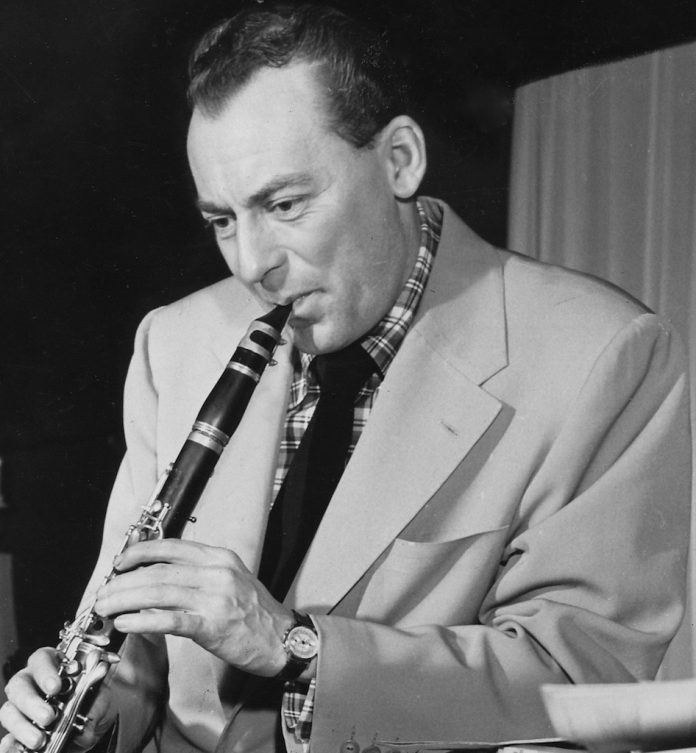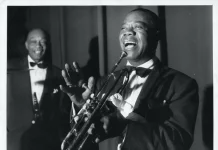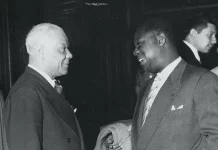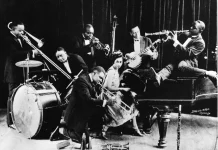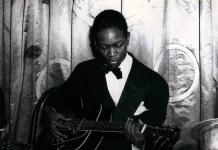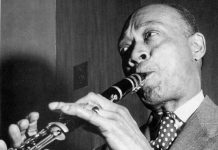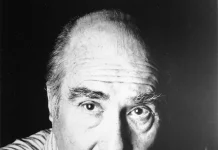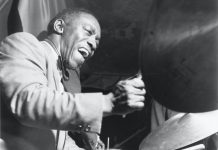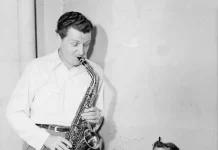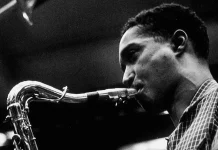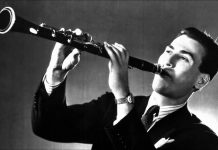The excitement mounts – well, it does in this house – with the forthcoming release by the Mosaic phoenix of The Complete Woody Herman Decca, Mars, MGM Sessions 1943-54 (MD7-267) in a box of seven CDs. The time taken in perfecting the transfers of the material to CD means that the box will be issued in June.
The company have given recognition to Woody as a giant figure in jazz with their three previous sets by him that compiled his work for Columbia, Capitol and Phillips. The new set will complete a formidable series of historic music which has been crying out for such comprehensive coverage.
When Woody Herman took over Isham Jones’s band on Isham’s retirement, he treated his musicians as equals and Woody let his musicians play what they wanted to. At that time most bandleaders insisted on conformity and told the sidemen what to play.
Woody behaved like that for the rest of his career and remained the most decent and overall most popular bandleader of his time.
I hope to review the new set for Jazz Journal, but I’d like to expand on one section of it here.
The box contains the Herman concert given at Carnegie Hall on 25 March 1946. Jazz hadn’t been played much at the hall, but the continuous excitement and creation of this concert was at least a match for the previous performances by Goodman in January 1938 and Ellington in January 1943. Many of us first experienced this Herman one on two MGM 10” LPs back in the 50s, and more recently Verve has released a double CD containing all the music discovered so far. Mosaic has searched for and found the original AFRS discs of the concert in the hope of finding the five numbers from the concert that left no trace. The AFRS set indicates that these weren’t recorded or have been lost over the years. Other fragments were lost amidst the complete recordings, which were made on acetates. Having found the AFRS discs, Mosaic is working to improve the sound and to improve the rugged programme so that the transition from track to track sounds like a real concert performance.
The band that played at Carnegie was riding high. It was the top band in the US and won the polls in Down Beat, Metronome, Esquire and Billboard, beating Ellington, Kenton and Basie. By the end of the year it and all those bands, with the exception of the struggling Ellington, would have collapsed. Paradoxically the band had been doing well financially – Herman’s most successful band ever in that respect.
While the other big bands collapsed from economic considerations, Woody folded the Herd because he needed time at home (he and his wife had bought Humphrey Bogart’s house in Hollywood) to deal with Charlotte’s addiction to alcohol and medicinal pills.
Charlotte then conquered her addictions. Woody went to an Alcoholics Anonymous meeting with her. “My whole band was sitting there”, he said.
Stravinsky: ‘I can listen to Shorty Rogers’s good style with its dotted tradition for stretches of 15 minutes and more and not feel the time at all, whereas the weight of every “serious” virtuoso I know depressed me beyond the counter action of Equanil in about five’
Let’s note the Herman band personnel for the concert: Woody Herman (cl, as, v); Pete Candoli, Conrad Gozzo, Sonny Berman, Irving Markowitz, Shorty Rogers (t); Bill Harris, Ed Kiefer, Ralph Pfeffner (tb; John La Porta, Sam Marowitz (as); Flip Phillips, Mickey Folus (ts); Sam Rubinowitch (bar); Tony Aless (p); Red Norvo (vib); Billy Bauer (g); Chubby Jackson (b); Don Lamond (d). Ralph Burns played piano on his “Summer Sequence”.
In my book on Woody I wrote that “…the music is some of the most exciting ever caught on record. Classics abound”. I have never changed my opinion.
Some of it was not so good. Igor Stravinsky had written “Ebony Concerto” for the band, and Woody decided to give the first performance at the concert. (This was not a first for Igor, who had written “Scherzo à la Russe” for the Paul Whiteman orchestra in 1940.) Rehearsing presented enormous difficulties to a band which included few good readers. The sidemen sweated on their parts at home before eventually Igor came to New York and rehearsed the band himself for four hours. Not wanting to upstage the musicians, Stravinsky came to the first rehearsal wearing his oldest polo-necked sweater and tennis shoes. The band had shown its respect for him by turning up in their best suits. Later, when the band came to Hollywood, he rehearsed them again. He later went to some concerts that Shorty Rogers gave there and said of them “I can listen to Shorty Rogers’s good style with its dotted tradition for stretches of 15 minutes and more and not feel the time at all, whereas the weight of every ‘serious’ virtuoso I know depressed me beyond the counter action of Equanil [a short-term treatment for anxiety and nervousness] in about five”.
Stravinsky had to re-copy the first movement of the concerto in quavers because the band couldn’t read semi-quavers.
“We stayed pretty befuddled until he sang the piece to us”, said Woody. “I was never a serious clarinettist. Everybody’s part was hard but I had this so-called ‘solo’ part. I went to fine clarinettists [some were from the New York Philharmonic] and asked if there was anything I could do to play this thing a little better and they all looked at it and said ‘That’s the hardest goddam thing in the whole world’”.
Stravinsky spent much time with Woody on the clarinet part. “Stravinsky sweated it out”, said Woody, “and I did too. He worked with me by the hour and helped me and tried to give me confidence in the whole thing”.
One night during the middle of all this Herman met Benny Goodman.
“Hey, Pops, is that a hard part, that Stravinsky piece?”
“Hard? It’s impossible”, Woody told him.
“Oh, it can’t be that hard”, Goodman told him.
Woody sent Goodman a copy of the score.
They met a few weeks later. “Hey, it is hard!” said Goodman.
Before writing the concerto, Stravinsky had listened to the power and fire of the brass and to the wild ensembles.
“And what do you suppose this man did?” asked Woody. “He wrote the quietest piece that he ever wrote in his life. The brass never gets out of the cup mutes”.
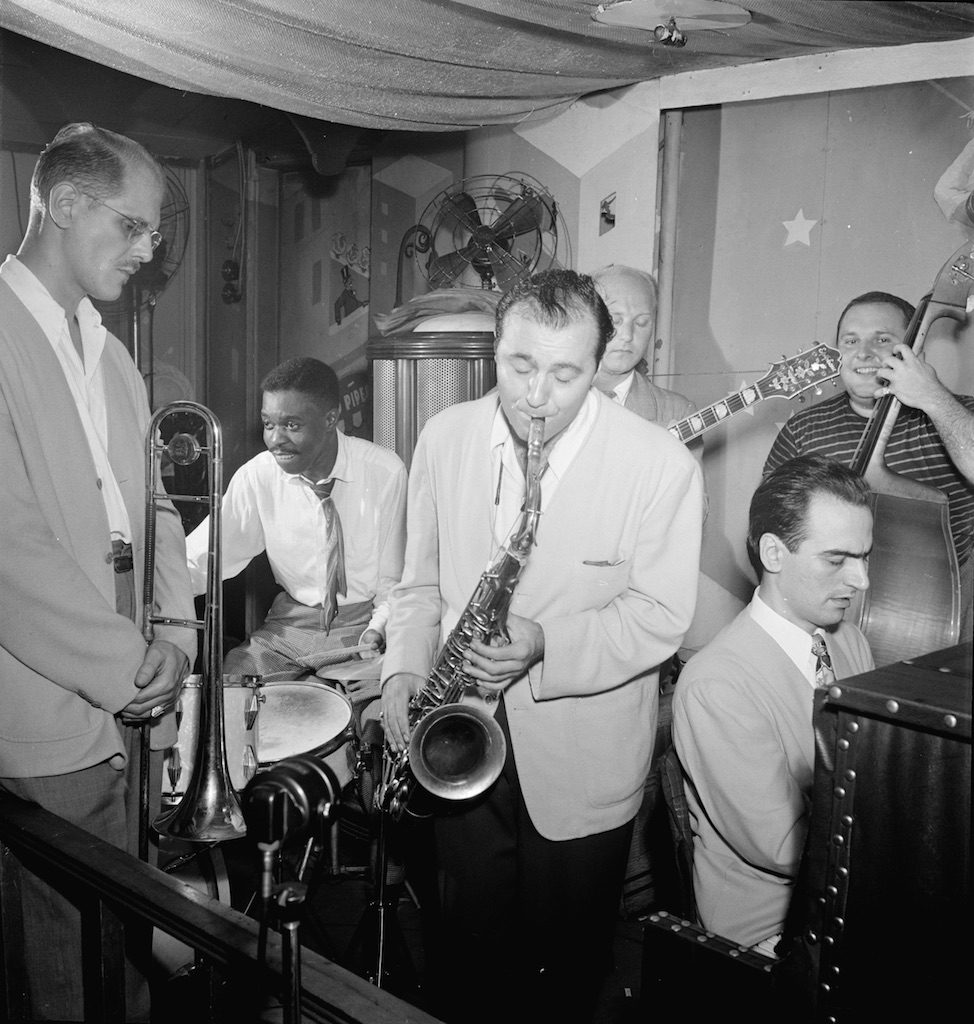
Flip Phillips had an important part, and along with Bill Harris he was one of the worst readers. (The two players are pictured above in 1947 at the Pied Piper, courtesy William P. Gottlieb. L-R: Bill Harris, Denzil Best, Flip Phillips, Billy Bauer, Lennie Tristano, and Chubby Jackson.) “Stravinsky said to me at one point ‘My dear fellow, what you are playing is very nice, but what I have written for you is much better’. During the rehearsal there was a passage I had to play and I was playing it soft. Stravinsky said ‘Play it “here I am”’ and I blew it louder. He blew me a kiss”.
The pressure produced compulsive smoking amongst the sidemen. “The atmosphere looked like Pernod clouded by water”, said Stravinsky.
“Woody”, said Igor, putting his arm around Herman’s waist, “You have a lovely family”.
The piece itself and the subsequent studio recording by the Herman band evoked little satisfaction amongst established critics of Stravinksy’s music, who found it comparatively trivial, and even less amongst Herman followers because, although Igor had written the piece with the instrumental line-up of the band in his mind, he had been too shrewd to include the language of contemporary jazz.
Bill Harris: His influence was universal and passed from one generation to the next so that today his style becomes part of the make-up of young players who don’t even know who he was. Seldom has there been such a benignly insidious influence in jazz.
Both groups were wrong, because after initial disappointment at first hearing and with hindsight the concerto’s many discoveries come to light. Max Harrison was the master at evaluating such works, and readers are directed to section 109 of The Essential Jazz Records Vol 1 (Mansell 1984) where his erudite writing builds a thorough analysis. His section on Herman’s First Herd, section 312 in the second volume, is definitive. There is a particularly good passage on trombonist Bill Harris “whose line can in a single improvisation pass from the murmur of seductive insinuation to full-throated manic expostulation … Harris seems to come from somewhere we have never heard of. Every conceivable aspect of technique (including exemplary control of vibrato) is adapted to his special purposes and every kind of phrase is admissible, including some hitherto not associated with the instrument”.
That “hitherto not associated with the instrument” is the essence of Harris’s place in the trombone pantheon.
Bill has and continues to influence more trombonists than any other master. When he first emerged in the 40s, apparently fully formed and without palpable outside inspiration (later Jay C Higginbotham and Benny Morton were suggested), he became overnight the prime force on his horn and his playing came to dominate that of the great players of his time, from Kai Winding to Don Lusher. His influence was universal and passed from one generation to the next so that today his style becomes part of the make-up of young players who don’t even know who he was. Seldom has there been such a benignly insidious influence in jazz.
Three of the pieces with greatest impact on the concert were Bill’s features “Everywhere”, “Mean to Me” and “Bijou”, trombone classics that have become legend.
There seem to be six pieces missing from the concert on pre-Mosaic CDs, including the opening “Caldonia” (I’m assuming that the programme order was in fact as the listing on the CDs and in Tom Lord’s discography – Lord specifies the unissued material). Perhaps Mosaic have found some of them.
The currently issued CDs begin with Burns’s seminal “Bijou”. Considering there was only one mike, both the band and the soloist are very crisp and clearly heard. Bill blows the plating off the bell. Flip, already emerged as a great ballad player, blows confidently on an eloquent and gentle “Sweet and Lovely”. There’s a violent contrast when Pete Candoli arrives with a brief “Superman With a Horn”. In theatres Pete used to arrive on stage swinging on a rope and wearing a Superman costume. What a powerful man he was in all respects!
The following “Blowing Up a Storm” introduces us to the loose and yet disciplined heads that Burns and Hefti loved so much – a form that belonged to this band. Woody opens with a Noone/Bigard excursion before Phillips blows against the brass and heralds the languid Harris arrival. Sonorous trombone sways between ballad and bucket. Norvo improvises distantly against a clear sax riff before the soon-to-be renowned brass shout up, spelled by Burns, Bauer and Norvo into the final rocking band ensembles with Pete Candoli climbing aloft. Norvo has an expressive and expansive “Man I Love” and then Chubby’s five-string bass brings on the “Four Men on a Horse” with good stuff from Jackson, Aless, Bauer and Lamond. There’s a routine “Good Earth”, notable for someone turning up the mike level shortly after it begins. The first half of the concert ends with Stravinsky’s concerto.
The second half opens with an old Brooklyn folk aria, “Your Father’s Moustache”, with Woody competing with the banks of brass. Is that first solo by Sonny Berman? No doubt about the second, a magnificent and violent eruption of Bill Harris. His off-stage pal Flip Phillips has a rugged tenor outburst, and Norvo swings effectively. Higher register dexterity from Woody before call and answer between the sections leads to a clarion trumpet section shout and the vocal wrestle with Pete Candoli. Great trumpet section work and punctuation from Lamond. There follows Harris’s emotive and heartfelt trombone exposition on his own “Everywhere”, with an equally potent “Mean to Me” as a follow up.
Aless is swift and eloquent on another Herman head, “Red Top”. Woody does some Bigard and Flip rides across Lamond’s punctuations. Bill barks again in a superb solo, all staccato and smears, before the sections raise up against each other and Norvo arrives. Woody sings “I’ll Get By” with tremendous backing from the band as a nice lead into “Panacea”, his down-to-earth blues about his wayward girlfriend – “You wore a diamond watch, said it came from Uncle Joe. When I looked at the inscription it said ‘Love from Daddy-o’.” There’s good support from Norvo, Phillips and the band, but the diadem is a monster solo, surely one of his best blues shouts on record, from Bill Harris. This is the epitome of Bill’s flat-out blues shouting. Pete Candoli takes over the high-note action at the close, one of his best blues shouts.
Woody was determined not to waste Norvo and he gets a second four-minute feature on “I Surrender Dear” with balance adjusted from the first half of the programme, which he follows with a dazzling “Hallelujah”.
The Woodchoppers (Berman, Harris, Phillips, Norvo) come forward with Norvo’s son-in-law Shorty Rogers’s “Heads Up”. Unfortunately Bill is off-mike for his solo. Flip and Norvo feature on Flip’s “1-2-3-4 Jump”.
Eight minutes of an incomplete “Summer Sequence” follow with Ralph on piano, Bauer’s guitar, off-mike Bill and fetching alto from Woody (this was of course before the advent of Stanley and the “Early Autumn” add-on).
A six-minute version of Hefti’s “Wildroot” has Flip off-mike for a lot of his solo and Bill is much the same. What a shame. It’s vintage Harris. Woody’s aggressive clarinet solo suffers the same fate, but despite all this it’s a good track to listen too, particularly with the baying sections coming together at the climax. Pete does the underpant-splitting honours at the end.
I suspect that Hefti’s future wife Frances Wayne, easily one of the best singers from the 40s, must have been featured at the concert. There’s no trace of her here. (When she died in 1978 Neal became a semi-recluse and refused all interviews. I tried very hard, and Nat Pierce tried on my behalf to get Neal to speak on my BBC radio programme, but to no avail. He remained heart-broken at her loss until he died in 2008).
The final track, unlikely to be the concert closer, but introduced by Woody as “We’d like to add a track…”, is a sensuous tenor solo by Flip on his own composition “With Someone New”. The fine arrangement is presumably by Ralph Burns.
It will be fascinating to see what Mosaic have been able to add and to hear how they have improved the sound quality.

